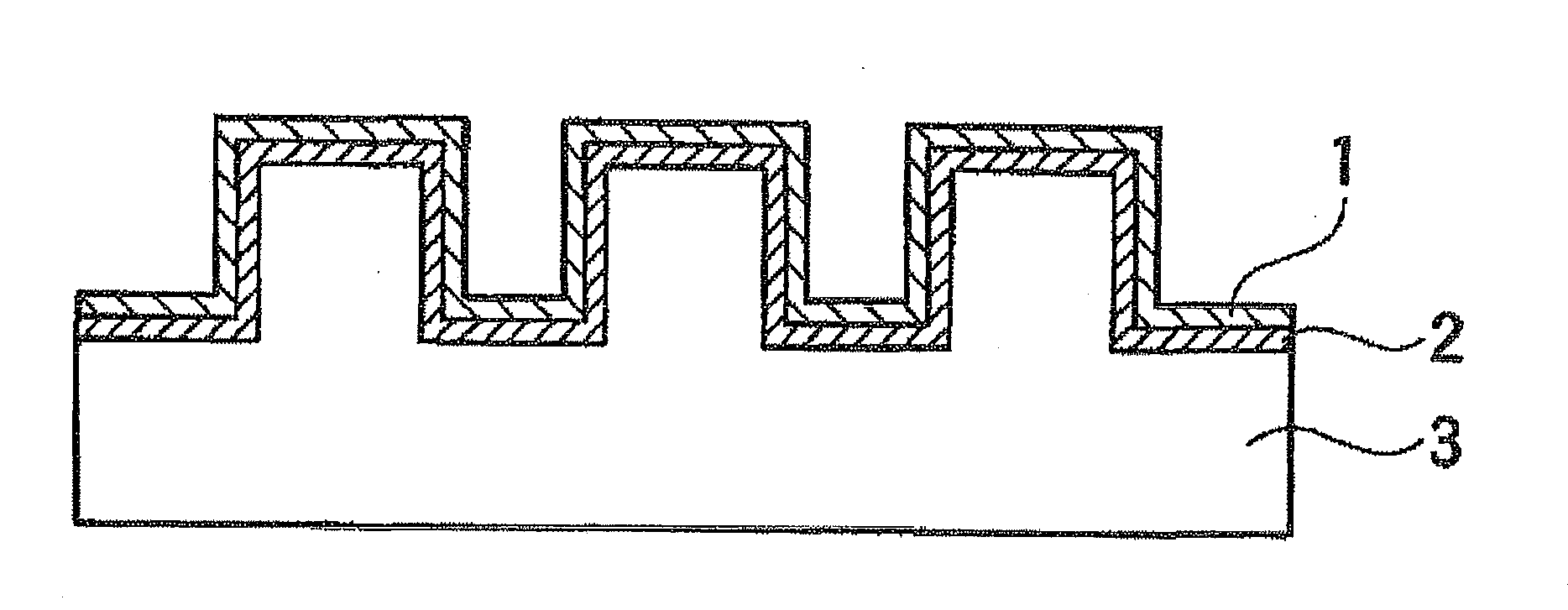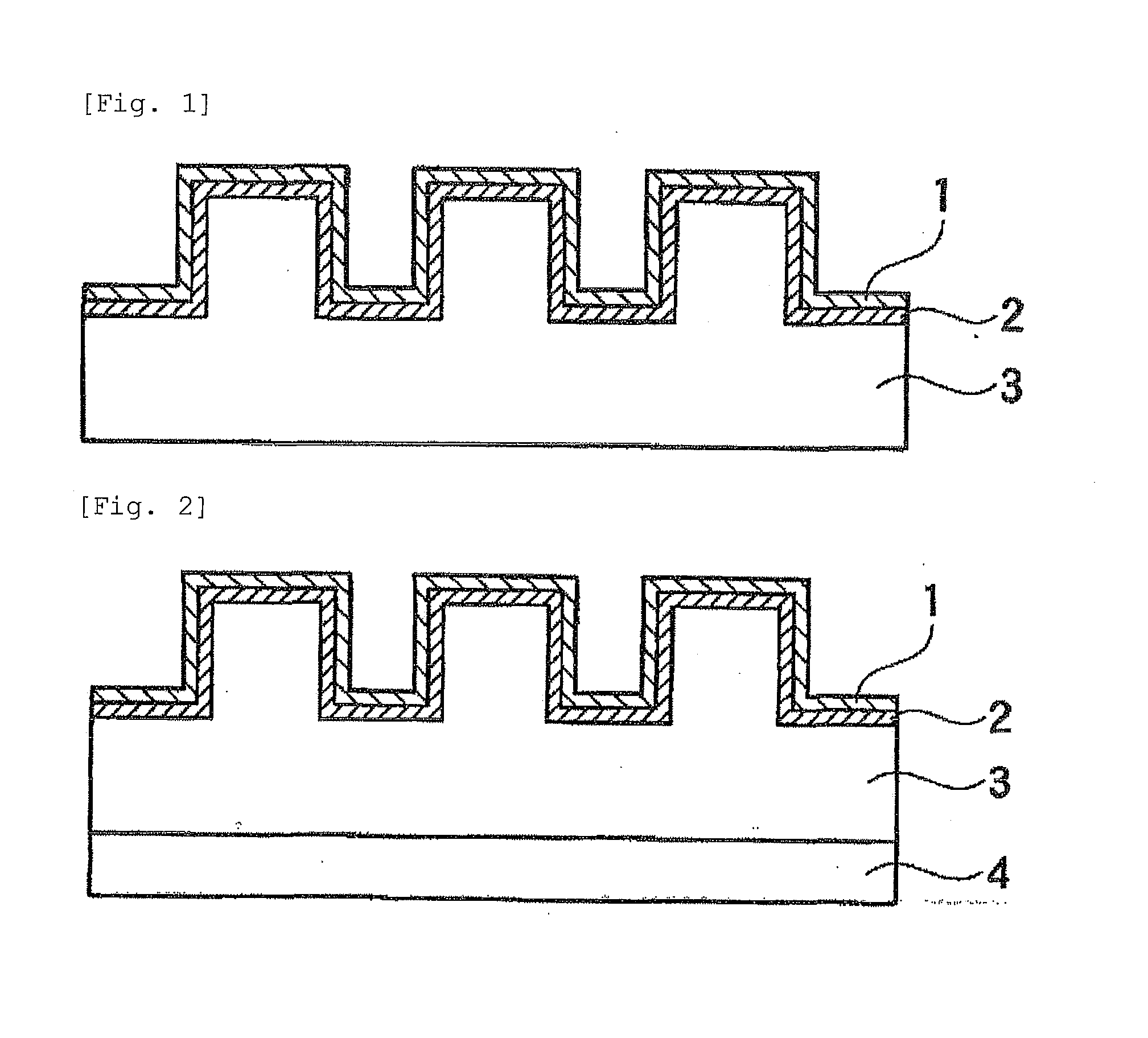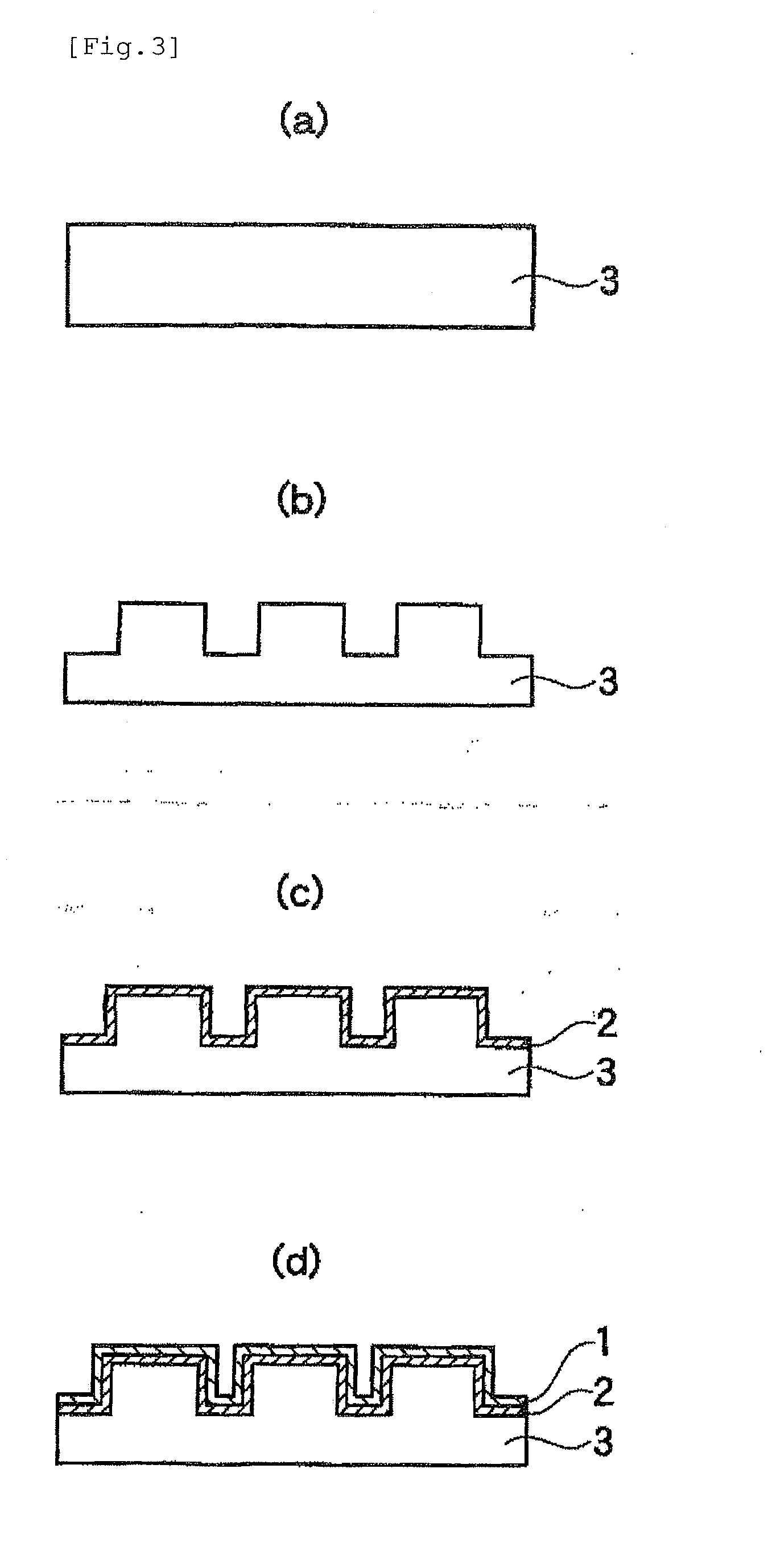Resin Mold for Imprinting and Method for Producing the Same
a resin mold and resin technology, applied in the field of resin molds for imprinting, can solve the problems of poor versatility, difficult to release the replica mold from the mother pattern, and high preparation cost, and achieve the effects of improving the adhesion, improving the releasability of the resin mold for imprinting from the resin subjected to imprinting, and improving the uniformity
- Summary
- Abstract
- Description
- Claims
- Application Information
AI Technical Summary
Benefits of technology
Problems solved by technology
Method used
Image
Examples
example 1
(1) Production of a Resin (Preparation of a Resin for a Resin Mold (PMMA))
[0189]A flask equipped with a stirring device, a nitrogen-introducing tube, a thermometer, and a reflux cooling tube was charged with 100 parts by weight of methyl methacrylate (product name: LIGHT ESTER M, manufactured by Kyoeisha Chemical Co., Ltd.) and 100 parts by weight of toluene.
[0190]Then, while introducing a nitrogen gas (0.3 L / min) into the flask, the content in the flask was heated to 80° C., and 0.5 part by weight of dimethyl 2,2′-azobis(2-methylpropionate) (product name: V-601, manufactured by Wako Pure Chemical Industries, Ltd.) was added as an initiator. The mixture was kept for 8.0 hours at 80° C.
[0191]Then, the supply of the nitrogen gas was terminated, and 100 parts by weight of toluene was added thereby lowering the temperature to terminate the reaction. A resin for a resin mold (a resin for a resin layer (PMMA)) was thus obtained. A molecular weight of the resin obtained is indicated in Tab...
example 2
[0201]A resin mold for imprinting was prepared in the same manner as in Example 1, except that in Example 1, (1) and (2) were not carried out, and in (3), using a polymethyl methacrylate (PMMA) plate (product name: ACRYLITE EX, manufactured by Mitsubishi Rayon Co., Ltd., thickness: 3.0 mm) instead of using the laminate consisting of the resin layer and the PSF film, heat imprinting was carried out onto the surface of the PMMA plate at a heat imprinting temperature of 160° C., at a pressing pressure of 5 MPa, and at a retention time of 30 seconds. Using the resin mold for imprinting obtained, imprinting was carried out in the same manner as in Example 1. The resin mold for imprinting obtained and the result of the imprinting are shown in Table 5.
[0202]Using the resin mold obtained, continuous photo-imprinting of 20 shots was carried out. The imprinting was achieved without any problem.
example 3
[0203]A resin mold for imprinting was prepared in the same manner as in Example 1, except that in Example 1, the thickness of the resin in (2) was 0.4 μm, and the master mold in (3) was changed to a quartz mold which had been subjected to release treatment (a transfer surface of 576 mm2, 25 nmL / S, a cycle of 50 nm, a depth of 50 nm, a linear form L / S). Using the resin mold for imprinting obtained, imprinting was carried out in the same manner as in Example 1. The resin mold for imprinting obtained and the result of the imprinting are shown in Table 1.
[0204]Using the resin mold obtained, continuous photo-imprinting of 20 shots was carried out. The imprinting was achieved without any problem.
PUM
| Property | Measurement | Unit |
|---|---|---|
| thickness | aaaaa | aaaaa |
| thickness | aaaaa | aaaaa |
| contact angle | aaaaa | aaaaa |
Abstract
Description
Claims
Application Information
 Login to View More
Login to View More - R&D
- Intellectual Property
- Life Sciences
- Materials
- Tech Scout
- Unparalleled Data Quality
- Higher Quality Content
- 60% Fewer Hallucinations
Browse by: Latest US Patents, China's latest patents, Technical Efficacy Thesaurus, Application Domain, Technology Topic, Popular Technical Reports.
© 2025 PatSnap. All rights reserved.Legal|Privacy policy|Modern Slavery Act Transparency Statement|Sitemap|About US| Contact US: help@patsnap.com



